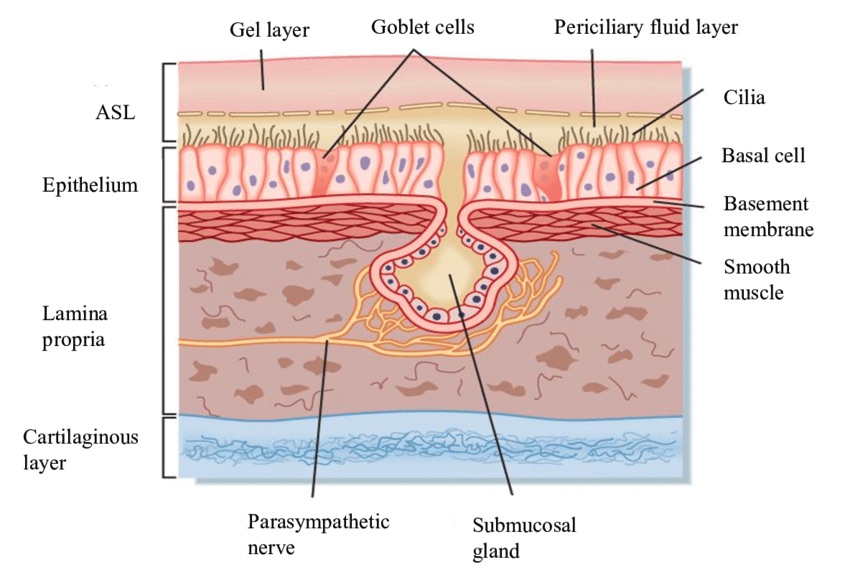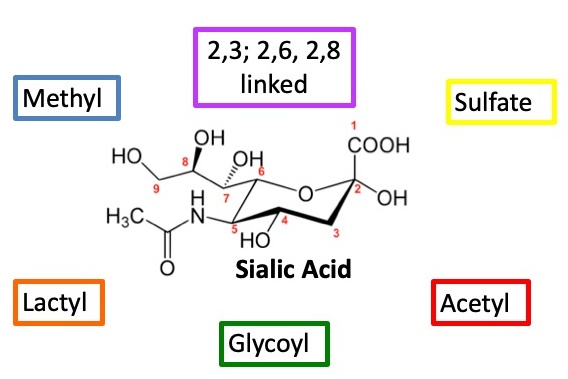OUR RESEARCH
sialic acids, mucus - structures & functions
These studies are examining the importance of mucus and its components in the interactions with pathogens, including those that alter the expression and variation of sialic acids (Sia), how those differ between different host animals, and their effects on the binding of viral proteins or the activity of enzymes such as neuraminidases. Mucus is a complex and highly variable mixture of different glycans, proteins and other molecules that covers all of the mucosal surfaces inside and outside the body. The mucus hydrates and lubricates the epithelial surfaces, protects against environmental or physical damage, provides the substrate for the growth and maintenance of the microbiome, and is the first line of defense against many different pathogens.
A key component of the mucus is the different Sia present – those are complex sugars that are expressed as the terminal glycans on oligosaccharides of many different proteins, glycolipids, cells and tissues, and they are also major components of the different layers of mucus on all mucosal surfaces. Their structures and charged properties allow them to bind many different ligands, while modifications of those structures and their attachment through different linkages control many specific interactions important for the normal functioning of animal cells and tissues. Sia may be removed or modified by specific sialidases (neuramindases), or esterases, respectively.

